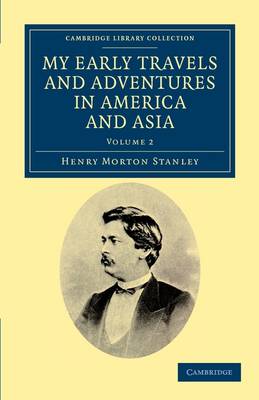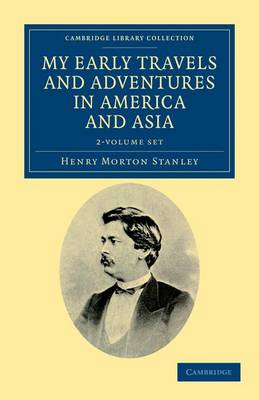Cambridge Library Collection - Travel and Exploration in Asia
1 primary work • 4 total works
Volume 2
My Early Travels and Adventures in America and Asia
by Henry Morton Stanley
Published 27 September 2001
Sir Henry Morton Stanley (1841-1904) was a journalist and explorer renowned for his adventures in Africa. After emigrating to America in 1859, Stanley worked as a journalist for the New York Herald. In 1869 he was instructed to undertake an expedition to find the missionary David Livingstone, and the success of this mission brought him public recognition and financial success. Published in 1895, these two volumes contain Stanley's early journalistic writing as special correspondent for the Herald and the Missouri Democrat. Volume 2 begins in 1869, when Stanley was sent to report on the inauguration of the Suez Canal, to write a guide to the Nile and to give an account of Sir Charles Warren's explorations underneath Jerusalem, before proceeding through Persia to India. Displaying his characteristic energy, versatility and direct writing style throughout, Stanley portrays, in the words of his publisher, 'life-like pictures of times gone by'.
My Early Travels and Adventures in America and Asia 2 Volume Set
by Henry Morton Stanley
Published 22 September 2011
Sir Henry Morton Stanley (1841-1904) was a journalist and explorer renowned for his adventures in Africa. After emigrating to America in 1859, Stanley worked as a journalist for the New York Herald. In 1869 he was instructed to undertake an expedition to find the missionary David Livingstone, and the success of this mission brought him public recognition and financial success. Published in 1895, these two volumes contain Stanley's early journalistic writing as special correspondent for the Herald and the Missouri Democrat. Stanley's reports in Volume 1 cover General Hancock's military expedition against the Cheyenne and the Sioux peoples in Kansas and Nebraska in 1866-7. In Volume 2 Stanley recounts his travels on an enterprise to report on the inauguration of the Suez Canal, to write a guide to the Nile and to give an account of Sir Charles Warren's explorations underneath Jerusalem, before proceeding through Persia to India.
My Early Travels and Adventures in America and Asia: Volume 2
by Henry Morton Stanley
Published 4 August 2010
Sir Henry Morton Stanley (1841-1904) was a journalist and explorer renowned for his adventures in Africa. After emigrating to America in 1859, Stanley worked as a journalist for the New York Herald. In 1869 he was instructed to undertake an expedition to find the missionary David Livingstone, and the success of this mission brought him public recognition and financial success. Published in 1895, these two volumes contain Stanley's early journalistic writing as special correspondent for the Herald and the Missouri Democrat. Volume 2 begins in 1869, when Stanley was sent to report on the inauguration of the Suez Canal, to write a guide to the Nile and to give an account of Sir Charles Warren's explorations underneath Jerusalem, before proceeding through Persia to India. Displaying his characteristic energy, versatility and direct writing style throughout, Stanley portrays, in the words of his publisher, 'life-like pictures of times gone by'.
My Early Travels and Adventures in America and Asia: Volume 1
by Henry Morton Stanley
Published 1 January 2012
Sir Henry Morton Stanley (1841-1904) was a journalist and explorer renowned for his adventures in Africa. After emigrating to America in 1859, Stanley worked as a journalist for the New York Herald. In 1869 he was instructed to undertake an expedition to find the missionary David Livingstone, and the success of this mission brought him public recognition and financial success. Published in 1895, these two volumes contain Stanley's early journalistic writing as special correspondent for the Herald and the Missouri Democrat. Stanley's reports in Volume 1 cover General Hancock's military expedition against the Cheyenne and the Sioux peoples in Kansas and Nebraska, and the subsequent peace conferences between General Sherman and the Plains Indians. He paints a vivid picture of life in 1867 in this area of the United States through in-depth descriptions of the customs and living conditions of the native Indians, geographical features and military confrontations.


